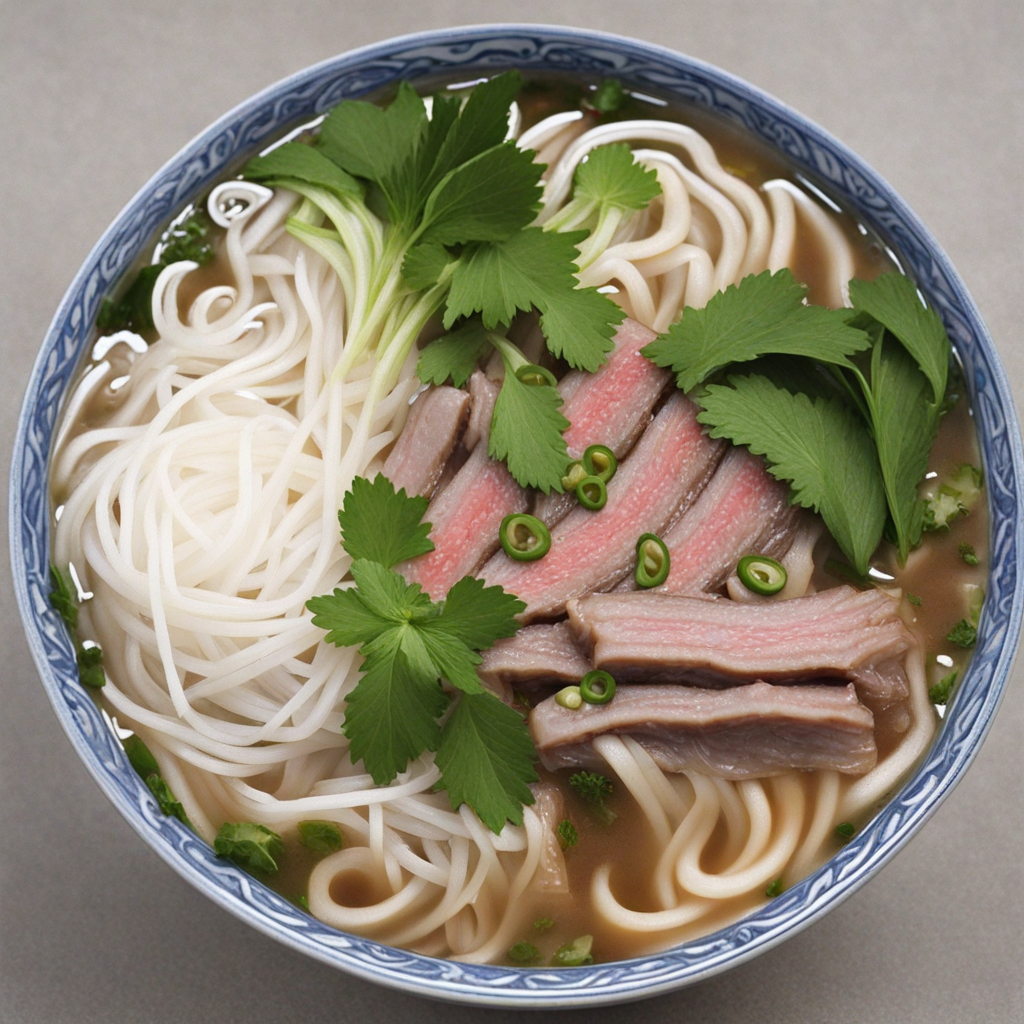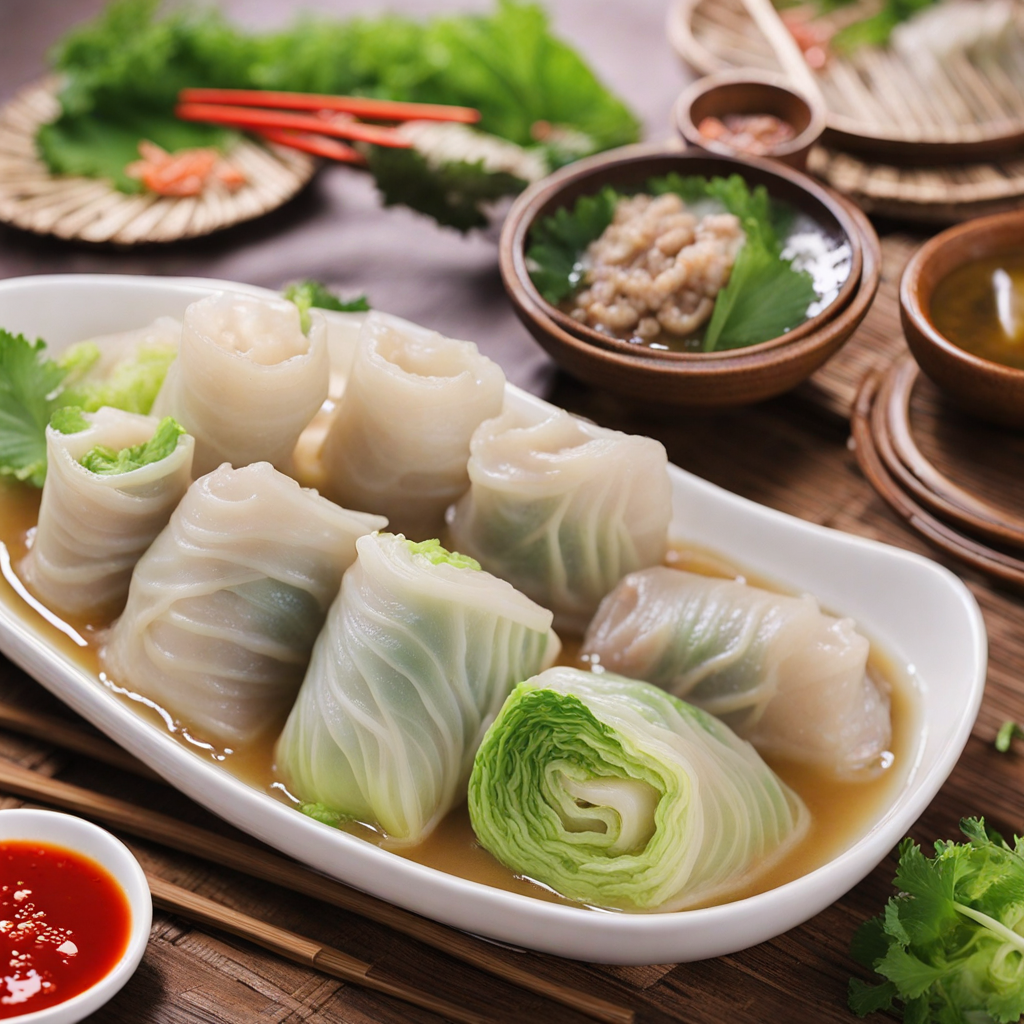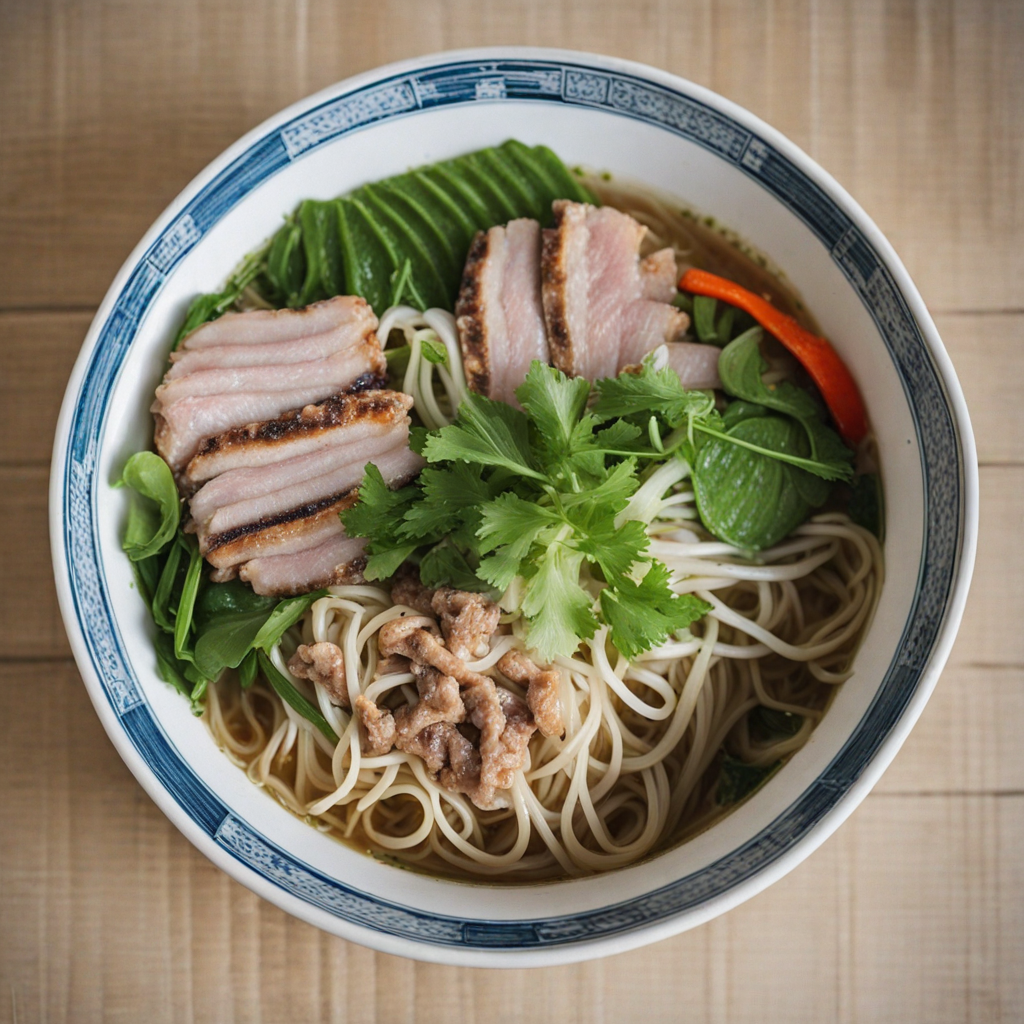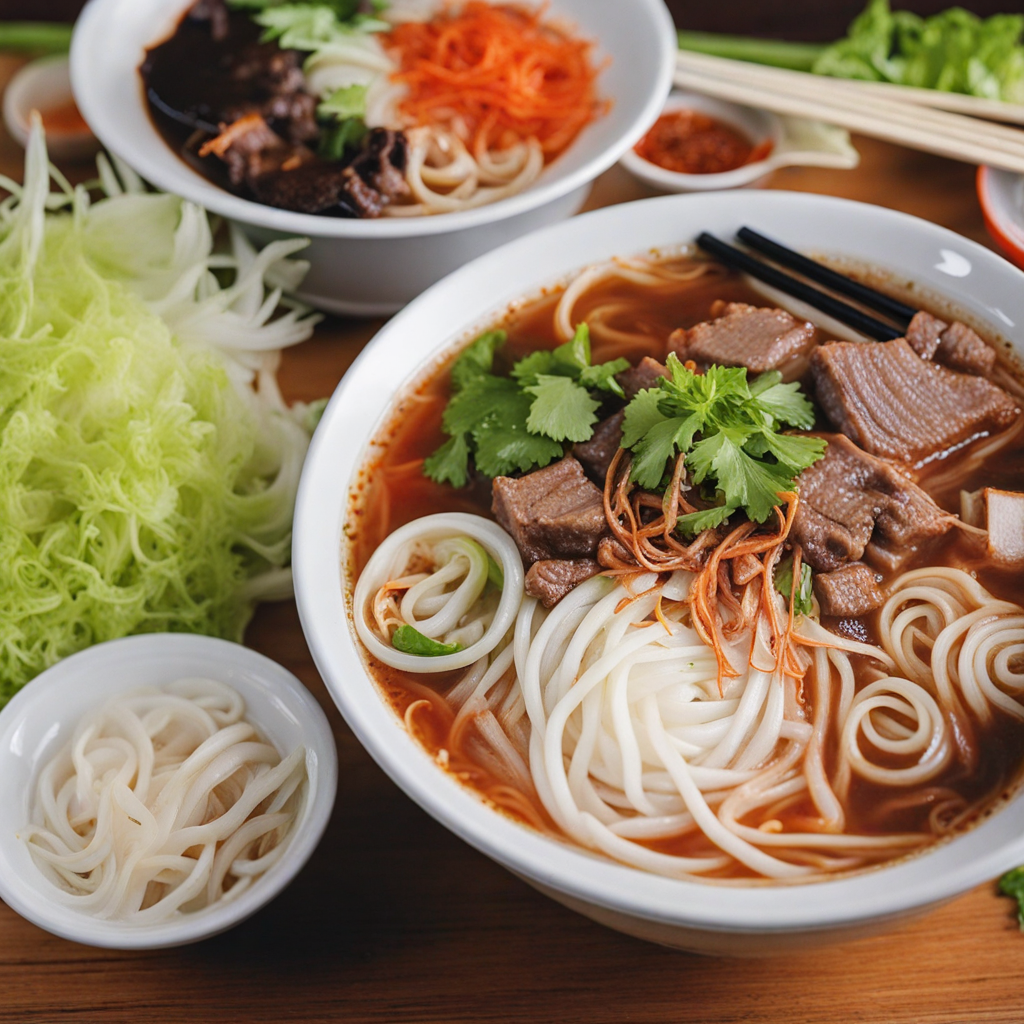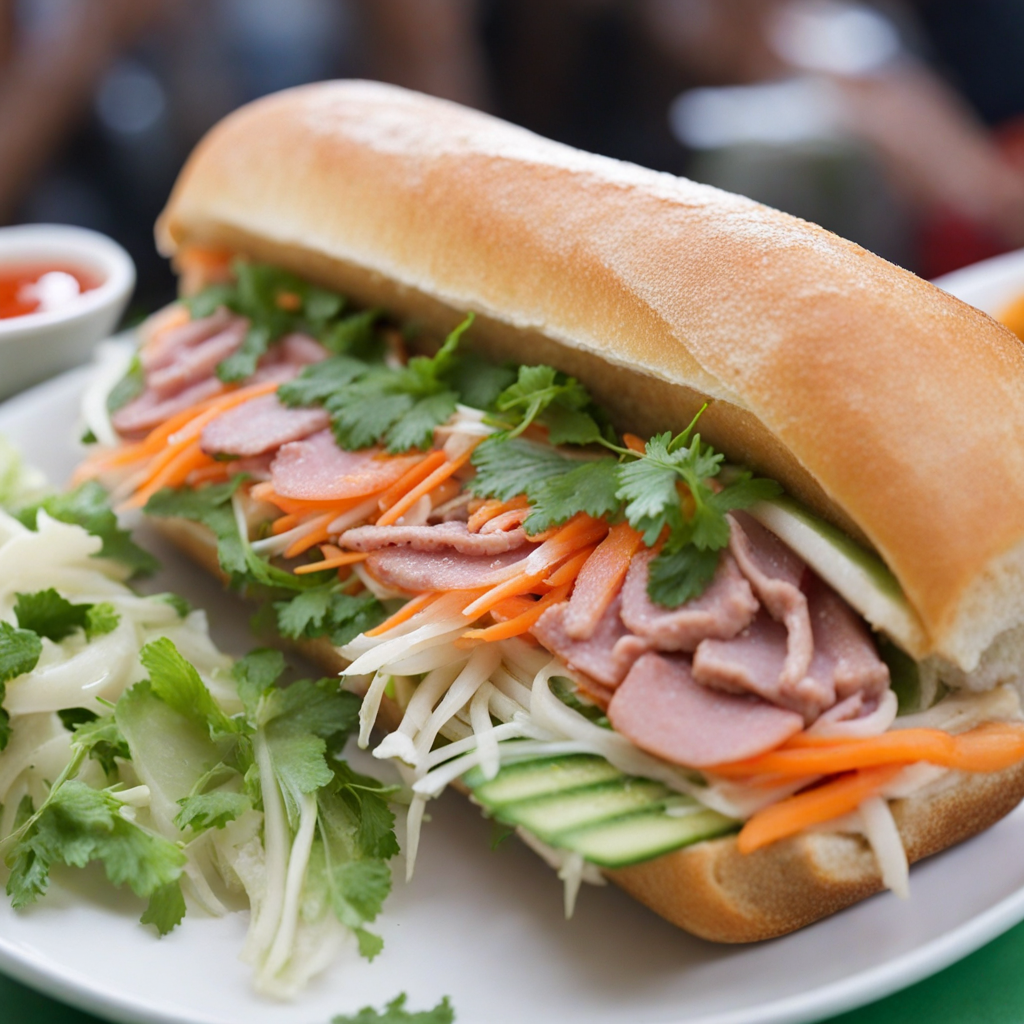Pho
Pho is a fragrant noodle soup that is considered a national dish of Vietnam, encapsulating the essence of Vietnamese cuisine. At its core, pho consists of a rich, aromatic broth made by simmering beef or chicken bones with a blend of spices, including star anise, cinnamon, and cloves, which impart a warm, complex flavor. The broth is complemented by flat rice noodles, known as bánh phở, which are soft and slippery, creating a delightful mouthfeel. Each bowl is typically garnished with fresh herbs, bean sprouts, lime wedges, and slices of chili, adding layers of freshness and vibrancy to the dish. What sets pho apart is its versatility and the regional variations found throughout Vietnam. While the most famous version is Pho Bo (beef pho), which features tender slices of beef and often includes brisket, flank, or meatballs, there is also Pho Ga (chicken pho) that offers a lighter, equally flavorful alternative. Each region has its own unique twist on the dish, with variations in the broth's sweetness or spice level, showcasing the local ingredients and cooking styles. This diversity makes pho a dish that can be enjoyed in countless ways. Eating pho is more than just a meal; it's an experience that evokes the bustling streets of Vietnam. The act of customizing your bowl with fresh herbs and condiments allows for a personal touch, making each bowl uniquely yours. The warmth of the broth combined with the fragrant herbs and the satisfying chew of the noodles creates a comforting experience. Pho is not just food; it’s a cultural expression, a symbol of Vietnamese hospitality, and a must-try for anyone looking to explore the rich tapestry of global cuisine.
How It Became This Dish
Phở: A Culinary Journey through Vietnam’s Heart and History Phở (pronounced "fuh") is not just a dish; it is a symbol of Vietnamese culture and a testament to the country’s tumultuous history and vibrant culinary landscape. This fragrant noodle soup, often characterized by its aromatic broth, rice noodles, herbs, and a selection of proteins, has roots that intertwine with the socio-political and cultural evolution of Vietnam. #### Origins of Phở The precise origins of phở remain somewhat murky, reflecting the complexity of Vietnamese history itself. It is widely believed that phở emerged in the early 20th century in the northern regions of Vietnam, particularly around Hanoi. The dish is thought to have been influenced by the French colonization of Vietnam, which began in the mid-19th century. The French introduced various culinary techniques and ingredients, including beef, which was not a traditional protein in Vietnamese cuisine prior to this period. The term "phở" is believed to derive from the French word "feu," as in "pot-au-feu," referring to a French beef stew. The adaptation of this dish into the local culinary context is a classic example of how food evolves through cultural exchange. The first recorded use of the word "phở" in print dates back to 1930, in a Hanoi newspaper, which marked its growing popularity. #### Cultural Significance Phở is more than just a meal; it embodies the spirit of Vietnam. It is a dish that transcends class and geography, enjoyed by people from all walks of life. Traditionally, phở is consumed for breakfast, but its appeal stretches throughout the day. Street vendors, family-run eateries, and high-end restaurants all serve variations of this beloved dish, making it an integral part of Vietnamese life. Phở is often associated with family and community. The act of gathering around a steaming bowl of phở fosters connection and conversation. It is common for families to have their own recipes, passed down through generations, each with its unique twist. Whether it’s the choice of herbs, the balance of spices, or the type of meat, each bowl of phở tells a story, reflecting the culinary heritage of its maker. #### Development Over Time As Vietnam underwent significant changes throughout the 20th century, so too did phở. The dish gained national prominence during the Vietnam War (1955-1975), when it became a symbol of resilience. As the war displaced many people and split the country into North and South, different regional variations of phở emerged. In the North, phở is characterized by its clear, aromatic broth, typically made from beef bones simmered for hours, and served with flat rice noodles (bánh phở). It is often garnished with fresh herbs like cilantro and green onions, and served with lime wedges and chili on the side. Northern phở tends to be less sweet and more savory compared to its Southern counterpart. In contrast, Southern phở, particularly the version popular in Ho Chi Minh City (formerly Saigon), tends to be sweeter and richer, often featuring a more complex broth with additional spices and garnishes. It is commonly served with a wider array of fresh herbs, bean sprouts, and lime, allowing diners to customize their bowls to their liking. The Southern variation reflects the region's agricultural abundance and culinary diversity. After the war, the diaspora of Vietnamese refugees brought phở to the global stage. As Vietnamese communities settled in countries such as the United States, Australia, and Canada, they introduced phở to new audiences. In the 1980s and 1990s, phở began to gain traction in Western cities, evolving into a popular dish among food enthusiasts. Its rise coincided with a broader interest in global cuisines, and phở quickly became a favorite among those seeking authentic and flavorful dining experiences. #### Phở in the Global Context The globalization of phở has spurred an explosion of creativity. While traditional recipes remain cherished, chefs around the world have begun to experiment with phở by incorporating local ingredients and flavors. Variations now include vegetarian and vegan versions, using mushroom broth and tofu, or even fusion dishes that incorporate elements from other culinary traditions. However, the essence of phở remains intact. The balance of flavors, the heartwarming broth, and the communal experience of sharing a bowl are what continue to draw people to this iconic dish. Phở represents a connection to the land, history, and the people of Vietnam, serving as a reminder that food is a powerful vehicle for storytelling and cultural identity. #### The Future of Phở As the world becomes increasingly interconnected, the future of phở looks bright. The dish continues to evolve while retaining its core identity. In Vietnam, chefs are innovating while respecting traditional techniques, ensuring that phở remains relevant in a rapidly changing culinary landscape. Internationally, phở's popularity shows no signs of waning; it is regularly featured in food festivals and culinary competitions, highlighting its status as a global phenomenon. Moreover, the rise of food media has played a crucial role in promoting phở. Documentaries, cookbooks, and social media platforms have helped to demystify the dish, allowing food lovers to learn about its preparation and cultural significance. This increased visibility has fostered a greater appreciation for Vietnamese cuisine as a whole, encouraging more people to explore the diverse flavors and dishes that Vietnam has to offer. Conclusion Phở is a dish steeped in history, culture, and tradition. It is a culinary representation of Vietnam's journey through colonization, conflict, and globalization. As it continues to evolve, phở remains a beloved staple, a source of pride for the Vietnamese people, and a dish that brings people together across cultural boundaries. Whether enjoyed in a bustling street market in Hanoi or a cozy restaurant in New York, each bowl of phở tells a story—a story of resilience, adaptation, and the enduring power of food to connect us all.
You may like
Discover local flavors from Vietnam


